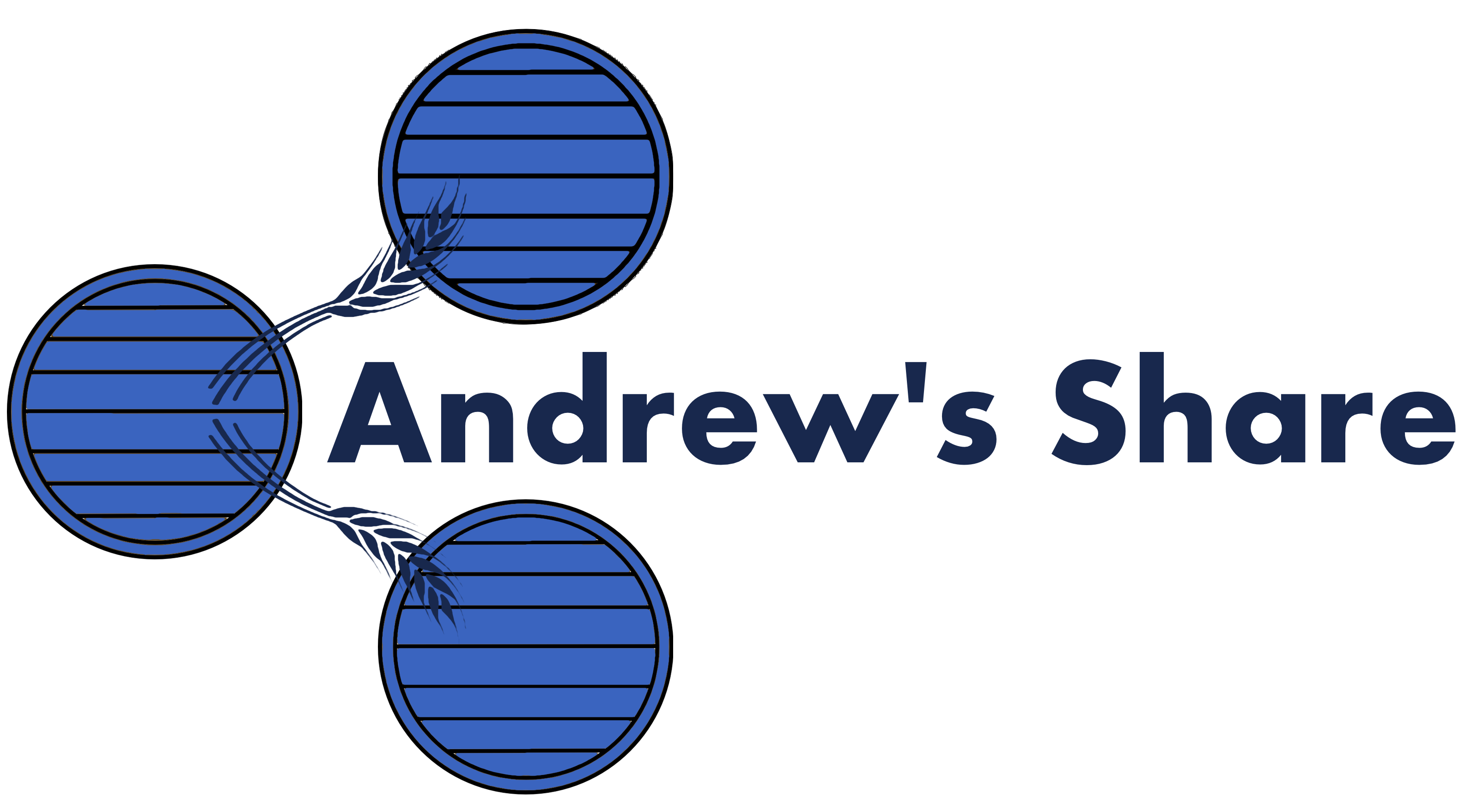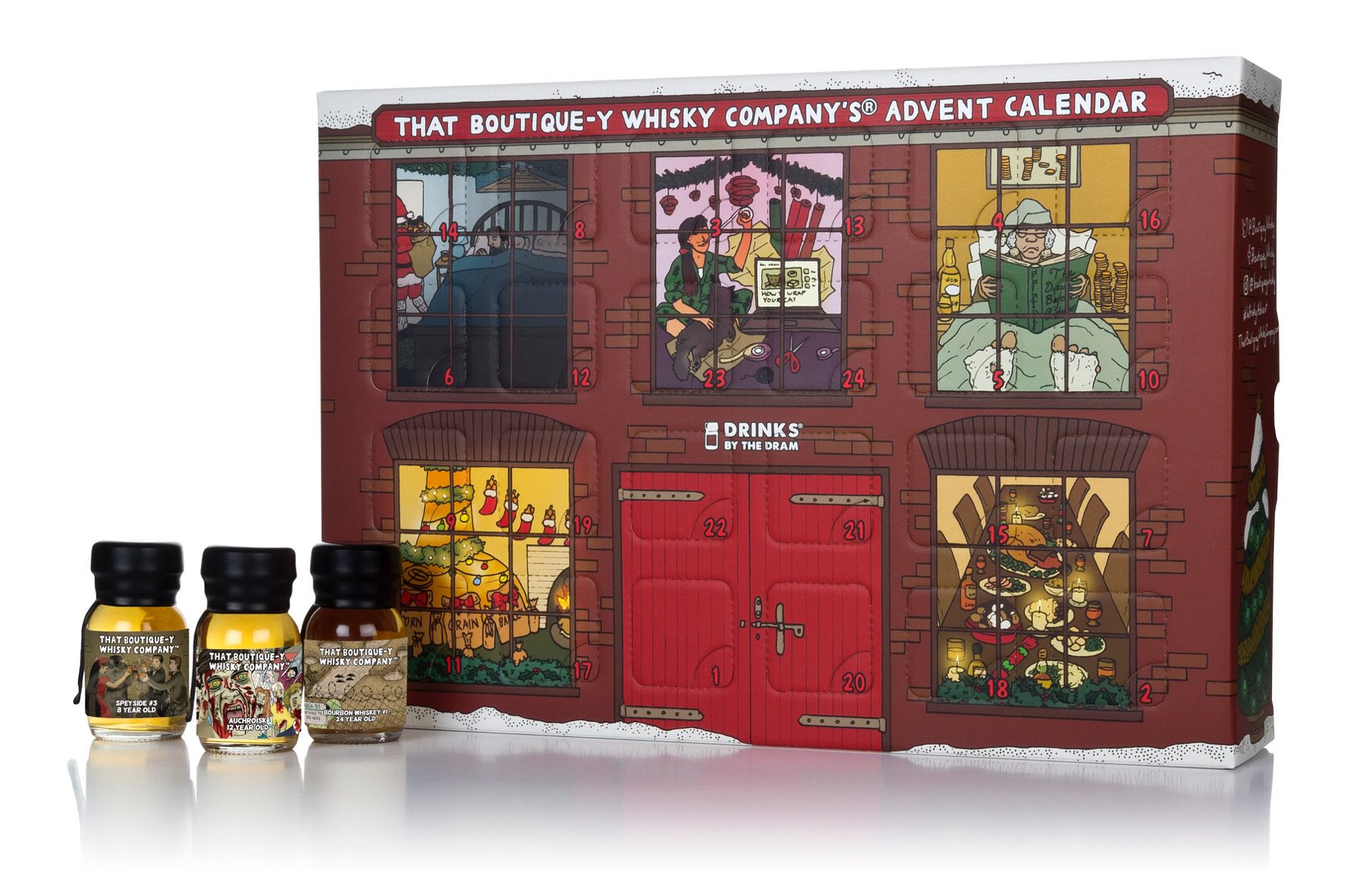Of all the excesses of the Christmas season, my favourite is the whisky advent calendar – a different dram each day in the run up to Christmas is a great opportunity to both widen one’s whisky horizons and revisit those forgotten drams.
Having grown in popularity in the last few years, there is now a wide range of calendars available featuring everything from single malt scotch, Japanese whisky, bourbon, single cask whiskies and of course all of the above.
This year I have been lucky enough to have been sent That Boutique-y Whisky Company’s Advent Calendar, available at Master of Malt. Independent bottlers in general tend to offer something outside of what you will typically find from distillery bottling, and TBWC is no exception. As well as bottling whisky – of any mash – from the usual suspect countries featuring both well-established and upstart distilleries, Boutique-y is something of a champion for new world whiskies, having bottled (rather good) whisky from everywhere from Sweden to New Zealand.
This post will track my progress as each day a door is opened to a boutique-y-ful world of discovery.
Show Full Dram List1st: Bourbon Whiskey #1 – Batch 1 – 24 Year Old
2nd: Speyside #3 – Batch 1 – 8 Year Old
3rd: New York Distilling Company – Batch 3 – 2 Year Old
4th: Teaninich – Batch 2 – 11 Year Old
5th: Blair Athol – Batch 5 – 21 Year Old
6th: Auchroisk – Batch 7 – 12 Year Old
7th: Royal Brackla – Batch 1 – 12 Year Old
8th: Blended Malt Whisky #1 – Batch 3 – 18 Year Old
9th: Blended Whisky 2 – Batch 3 – 22 Year Old
10th: Strathclyde – Batch 4 – 31 Year Old
11th: Speyburn – Batch 3 – 10 Year Old
12th: Longmorn – Batch 3 – 10 Year Old
13th: Ben Nevis – Batch 10 – 23 Year Old
14th: Irish Single Malt #1 – Batch 2 – 13 Year Old
15th: Islay #3 – Batch 4 – 13 Year Old
16th: Macduff – Batch 8 – 10 Year Old
17th: Cotswolds – Batch 1 – 3 Year Old
18th: James E. Pepper – Batch 2 (PX Finish) – 3 Year Old
19th: Tomatin – Batch 4 – 11 Year Old
20th: Linkwood – Batch 7 – 10 Year Old
21st: Clynelish – Batch 7 – 21 Year Old
22nd: Heaven Hill – Batch Batch 1 – 9 Year Old
23rd: Ben Nevis – Batch Batch 8 – 21 Year Old
24th: Cambus – Batch Batch 11 – 28 Year Old
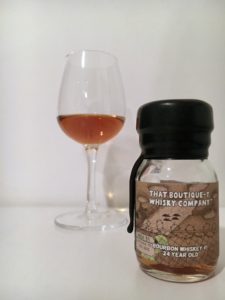 1st: Bourbon Whiskey #1 – Batch 1 – 24 Year Old
1st: Bourbon Whiskey #1 – Batch 1 – 24 Year Old
Advent this year begins with something of a mystery; a 24 year-old bourbon from an unnamed distillery. As an independent bottler, sometimes the opportunity arises to release a whisky from a distillery not known for offering stock to independents, or perhaps a few casks have been discovered which would not fit the distillery’s brand for any number of reasons. In such cases, the independent bottler can often obtain and release under a non-disclosure agreement, not naming the source distillery on its label.
That Boutique-y Whisky Company is no stranger to such arrangements, and has in the past left some obscure, subtle or sometimes not-so-subtle hints at the source distillery via the vibrant and creative comic book style labels created by Emily Chappell. I am pleased to see that these labels have been scaled down for the 30ml Drinks By The Dram format.
If today’s dram offers any hints on its origins from the label I have failed to pick them up. Featuring a shot of Area 51, an alien can be seen in the foreground, with Bigfoot wandering off from a crop circle containing four dead birds in the distance. Answers on a postcard please!
Batch 1 is a 24 year-old bourbon bottled at 48% ABV from an outturn of 8,376 bottles. Given these numbers my first guess would be a Heaven Hill whiskey, but I certainly wouldn’t like to commit to that!
Nose: A robust nose leads with earthy spice – cacao nibs in particular, alongside warm baking spice and root spice with cloves appearing. There is some marzipan sweetness behind this alongside red fruit which balances the nose nicely.
Taste: A thick, creamy mouthfeel brings an initially bright palate, with red summer fruit and the sweetness of vanilla toffee. Drying spice soon takes over alongside a touch of char. The mid-palate onwards sees hazelnuts and dark chocolate make an appearance.
Finish: A long finish sees lingering baking spice, cocoa powder and cinnamon, with a peppery note providing the background.
This is a fantastic bourbon, and is an example of what independent bottlers can do so well: TBWC has sourced a significant volume of well-aged bourbon here which has stood up to its 24 years in new oak, and has been released at a not-unreasonable price (as of 1st December there is an ongoing Master of Malt flash sale making this very good value indeed!).
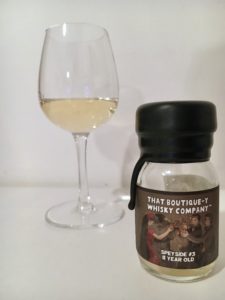 2nd: Speyside #3 – Batch 1 – 8 Year Old
2nd: Speyside #3 – Batch 1 – 8 Year Old
The mysterious side of Boutique-y continues today with a single malt of undisclosed origin. In this instance we are told that the whisky is from a distillery in Speyside, which may immediately draw some preconceptions and expectations of a rich, sherried whisky as is ostensibly the staple of the region.
Of course to throw even the tiniest glint of scrutiny onto the concept of regionality in Scotch whisky is to watch it collapse on its inconsistencies and contradictions. There is nothing exclusively Speyside about filling spirit into an ex-oloroso butt, Jerez will happily season and sell casks to anyone in Scotland who can stump up the cash. Not that every one of the 50 or so distilleries in the region focus on a rich, sherried style; Glen Grant and Glenlivet are examples noted for a lighter spirit, whereas Mortlach, Cragganmore and Benrinnes fall into a more meaty, savoury category. Finally, while Speyside is noted for (mostly!) unpeated whisky, this would only have become the norm after the introduction of the railway lines along the region made the use of coke and coal logistically feasible. Pre-railway Speyside whiskies would not be readily identifiable as such today.
So region does not necessarily tell us what we can expect from today’s dram, but perhaps the label may offer a clue as to the distillery of origin? A rather old-fashioned looking motley crew – including a headless chap – appear to be mid-toast. Perhaps a toast to the ghost as they do in Glenrothes?
Batch 1 is an 8 year-old bottled at 50.7% ABV, and is something of a sneak preview as it does not appear to have reached general release as of today.
Nose: An initial hit of cereal and baking spice with soft fruit behind, honeydew melon in particular. The nose becomes richer in time with raisins and vanilla custard, reminiscent of spotted dick dessert at the school cafeteria!
Taste: Warm vanilla sponge cake, lots of barley sugars, with tinned tangerines providing a top note and a light treacle providing depth. Freshly baked brioche and other familiar tastes of the patisserie.
Finish: Stone fruit dominates, with a touch of astringency at the end, no doubt a by-product of this whisky’s relative youth.
A solid dram all-in-all, showing that even at a relatively young age a well-executed spirit-led whisky can have a lot to offer.
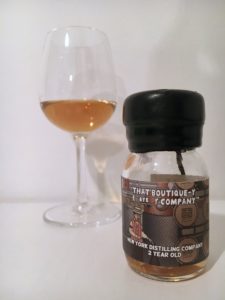 3rd: New York Distilling Company – Batch 3 – 2 Year Old
3rd: New York Distilling Company – Batch 3 – 2 Year Old
Today brings us back to the USA, this time in the north-east with an example of America’s original spirit from New York Distilling Company.
American rye whiskey has really been booming over the last 5 or so years. One might scarcely believe it now, but it’s only been a few years since rye was almost dead as a category but for a small handful of Kentucky-style 51% rye mash-bills. The reason for rye whiskey’s huge resurgence can be seen as two-fold: firstly demand was driven by trend-setting bartenders. Moving in cycles, tastes started to move away from complex, ingredient-laden unaged-spirit-based cocktails and looked to the pre-prohibition era to recreate more simple, classic cocktails – many of which were rye-based. At the same time, the craft distiller scene was taking off, and it turns out that since rye is a flavourful cereal whose resulting whiskies take a good deal of their complexity from the grain, it can work very well as a young whiskey and is thus well-suited to cash-flow-conscious fledgling distilleries.
Well aware of this from his extensive bartending experience, New York Distilling Company co-founder Allen Katz opened the distillery on the anniversary of repeal day, with a view to producing spirit with cocktails in mind.
The first two batches released by TBWC featured a Big Apple being filled with spirit in lieu of a cask, a cute nod to the whiskey being finished in applejack casks. Batch 3 however sees what appears to be a large beer bottle being filled in its place – perhaps we have a beer cask finish on our hands? Yielding 461 bottles, batch 3 is bottled at 47.7% ABV.
Nose: Plenty of rich, dark spice, dark chocolate, nutmeg and treacle. On the brighter side there is orange peel and candied cherries, with panettone bread-y notes underneath and a brief hint of espresso at the back. Given some time in the glass the bright fruit notes are accentuated.
Taste: Classic rye spice on the front including licquorice, there is also maraschino cherries and other bright red summer fruit notes. The mid-palate onwards sees earthy spice – cocoa in particular – begin to dominate.
Finish: Earthy spice notes dominate a finish that is considerably long for a 2 year old whisky
I have tried both previous batches from TWBC and enjoyed both, and this is no exception. At less than £40 a bottle this is good, fun, drinking whiskey.
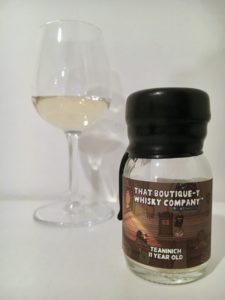 4th: Teaninich – Batch 2 – 11 Year Old
4th: Teaninich – Batch 2 – 11 Year Old
The distilling powerhouse Diageo owns plenty of malt distilleries in Scotland, however only a select few of these are open to the public. If you have toured more than one then you will be quite familiar with the common script: a quick walk round the site from the malt mill through to the mash tun, washbacks and the camera-shy still room. If you’re lucky you may get to see the inside of a warehouse. After this you will be ushered back to the visitor centre for a dram and a browse of the core range and a distiller’s edition (and not much else – certainly no bottle-your-own here!)
The standard Diageo tour guide will insist that for much of the process yield is king, flavour creation is not relevant. It doesn’t matter which strain of barley is used, it won’t affect flavour. It doesn’t matter how you mash, it won’t affect flavour. It doesn’t matter how long your fermentation is, it won’t affect flavour. From a whisky geek’s perspective some of the more interesting Diageo distilleries are those which are unfortunately not open for visitors. In some of these distilleries, they do do things differently.
Today’s dram is a perfect example: a giant workhorse distillery, the vast majority of whisky produced at Teaninich is destined for blends. Very few single malts make it to market but for a Flora and Fauna expression and of course independent bottlings. What makes Teaninich almost unique among Scotch malt whisky distilleries is the absence of a mash tun. Instead, wort is produced from a mash filter which produces a very clear wort and can lend itself to very fragrant, grassy, almost tea-like spirit.
So if flavour is not created during the mash, why install this higher maintenance device? It seems unlikely that this decision was taken with yield in mind, given that it has not been repeated elsewhere. If only we could see for ourselves and ask the question!
Today’s dram is batch 2 from TBWC, an 11 year old bottled at 47.9%. From its extremely light colour this appears to have been from a multiple-refill cask – a great opportunity to explore that spirit character!
Nose: Initially grassy with summer meadow notes, white grape and orchard fruit, soft peaches and cream. Right at the back of the nose there is the sweetness of golden syrup. This sweetness grows with time in the glass.
Taste: A gentle delivery brings cereal, Weetabix and digestive biscuits. Behind this is soft orchard fruit. There is the slight heat of white pepper throughout.
Finish: A relatively short finish sees the return to dominance of the grassy notes from the nose.
I wouldn’t consider this the sort of whisky I would open and enjoy over the course of an evening, but it is a great example of something interesting to explore; what should be a key tenet of any independent bottler.
 5th: Blair Athol – Batch 5 – 21 Year Old
5th: Blair Athol – Batch 5 – 21 Year Old
The Scotch whisky moguls of the 1800s are legendary characters. People like Alexander Walker (son of Johnnie) and Tommy Dewar were known for being ahead of their time when it came to branding and advertising, be it square bottles and angled labels allowing for more visible text, or marketing world tours.
Arthur Bell of what would become Bells whisky was not without innovation himself; as well as being the first to appoint a full time agent in London to sell his different blends, he was a campaigner for the introduction of a standard bottle size for spirits in the UK. However he was by no means a believer in marketing; during his lifetime he refused to advertise or use brand names. This of course changed when his two sons Arthur Kinmond and Robert took control of the company, heralding the start of a period of steady growth and expansion which would conclude with Bells controlling over a third of the blended Scotch whisky market.
This market today is worth over £3bn and involves the export of over a billion bottles every year. With such a vast consumer group, it would seem entirely sensible to tap into the whisky tourism boom so successfully broached by the single malt brands. But while a single malt distillery offers a natural destination, a blended whisky is a composite of many parts of the country – how can the brand be distilled into a single destination?
Step forward one of the more recent innovations of the whisky blenders: the Brand Home. Nominating a particularly relevant distillery that produces malt for the blend, the visitor experience can be focused around the blend as opposed to the specific malt being produced.
Today’s dram – Blair Athol – is the designated brand home of Bells whisky. Situated just outside the picturesque tourist hotspot Pitlochry, Blair Athol was always a constituent in the Bells blend, and the purchase of the distillery (as part of acquiring P. Mackenzie & Co Distillers Ltd) marked the establishment of Bells as a serious player in the industry.
Aside from a Flora and Fauna expression, Blair Athol is most commonly seen independently bottled. Today’s dram is the 5th batch from TBWC – a 21 year-old bottled at 51.5% ABV.
Nose: Vanilla ice lolly on a wooden stick, followed by soft stone fruit and orange oil. There is a light perfumed top note of cut grass. At the back there are hobnob biscuits.
Taste: Starts with a pleasant balance of fruit and cereal notes, alternating between peach gummies, juicy orange and biscuits. A touch of vanilla on the mid-palate initiates the arrival of more wood spice.
Finish: Browned butter and dry spice.
A very pleasant dram and quite more-ish dram – it would be all too easy to pour another glass of this.
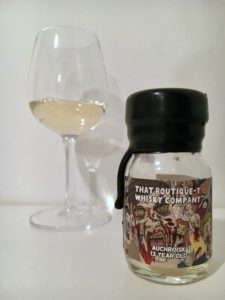 6th: Auchroisk – Batch 7 – 12 Year Old
6th: Auchroisk – Batch 7 – 12 Year Old
We are back in Speyside for today’s advent dram, with another of Diageo’s workhorse malt distilleries, Auchroisk. The distillery was built in 1974, primarily to supply the J&B blend. Its location was chosen primarily for the water source which is similar to that used by Glen Spey, another key constituent of J&B.
Today the distillery produces north of 3 million litres of pure alcohol per year, with the vast majority destined for blending. However the appearance of Auchroisk as a single malt is neither a recent trend nor a rare historical trivia. The distillery was in fact something of a pioneer in the single malt world with an initial release in 1978.
In 1986 marketing dictated that Auchroisk was too difficult for consumers outside of Scotland to pronounce, and thus as part of a rebrand The Singleton was born. In further pioneering, these releases took 10 year-old ex-bourbon cask matured malt and transferred it to ex-sherry casks for a further 2 years, in what is possibly the first large scale example of cask finishing. Despite these innovations and the branding effort, The Singleton never became a major player in the single malt market, and the moniker was dropped in 2001 when the Auchroisk name was once again used in a release in Diageo’s Flora and Fauna range.
Strangely The Singleton was subsequently reused as a brand from 2006 onwards for not one, but three entirely different distilleries. The Singleton of Glen Ord was released in the Asian market, closely followed by The Singleton of Glendullan for North America and The Singleton of Dufftown for Europe. The concept of a single brand serving consumers with different flavour profiles in different markets is certainly a curious one, particular in the age of global travel. Today all three Singletons are more or less available worldwide, potentially adding further confusion to new consumers.
To go back to where it started is to once again rely on our dependable independent bottlers. TBWC does not disappoint, with today’s dram being a 12 year-old expression bottled at 47.9%, the 7th batch released.
Nose: Grassy and nutty with an unmistakable waxy element. Bread dough. Top notes of summer raspberries with a touch of vanilla, some golden syrup on the sweet side.
Taste: A light yet firm, creamy delivery brings sweetness of vanilla and other wood spice, autumnal fruit and blackcurrant jam. The mid-palate reveals a hint of the more herbal, nutty side from the nose but it isn’t long before the sweet fruit and spice returns.
Finish: The nuttiness returns with hazelnut butter and cacao nibs.
This is a fairly “weighty” dram without being overly assertive – it’s clear to see why this is a favoured blenders malt. On its own it still offers plenty for the explorer.
 7th: Royal Brackla – Batch 1 – 12 Year Old
7th: Royal Brackla – Batch 1 – 12 Year Old
The first week of advent concludes in the highlands just off the northwest tip of the Speyside region, with Royal Brackla. This historic distillery is a product of persistence and vision – or stubbornness and arrogance, depending on whom you ask – on the part of its founder Captain William Fraser.
Initially built to steal the lunch of local illicit distillers who offered a market to farmers with excess grain, the resulting spirit proved unpopular locally, perhaps due to the divisive character at the helm. Undeterred, the Captain employed a rather innovative and pioneering approach (for the time) to selling his whisky, shipping it to appointed agents in cities across the country to be sold in these urban environments. This became the standard sales approach for the big blend brands.
It was likely due to this strategy and the consequent availability of Brackla in London that it came to the attention of King William IV, who enjoyed the whisky so much it was granted a royal warrant, the very first granted to a whisky. Needless to say this marketing opportunity was not missed, with Brackla very shortly after being prefixed with “Royal” to celebrate the appointment.
The whisky being produced at Royal Brackla today is most likely unrecognisable from that which King William IV – and shortly after, Queen Victoria – enjoyed; back then this was known as a peated dram. Today long fermentation and plenty of copper contact and reflux during distillation encourages a bright and perfumed spirit.
After years of Royal Brackla’s output being directed exclusively into blends, owner John Dewar & Sons established a core range of single malt expressions as part of the Last Great Malts series in 2014 alongside Craigellachie, The Deveron, Aultmore, and Aberfeldy, but with nowhere near the attention and marketing budget that the latter enjoys.
Aside from the distillery original bottlings, Royal Brackla has long been available as single malts released by independent bottlers. TBWC has been relatively late to the party here with today’s dram being from its first batch, bottled back in February at 47.9% ABV yielding 1,472 bottles.
Nose: Light and slightly grassy, with lemon peel and a touch of honeysuckle and other floral notes. In the background are hints of malty cereal.
Taste: Malty at first before the fruit arrives: pears initially before moving to juicier peaches and cream garnished with lemon zest.
Finish: A touch of vanilla joins the fruit from the palate.
A great example of the distillery character, this would make an excellent aperitif on a spring evening.
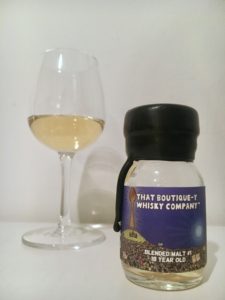 8th: Blended Malt Whisky #1 – Batch 3 – 18 Year Old
8th: Blended Malt Whisky #1 – Batch 3 – 18 Year Old
As we have already seen during advent thus far, independent bottlers are a strong and useful ally of the whisky enthusiast. Offering single malt expressions from blend-focused distilleries which would be otherwise unavailable, showing different sides to distilleries than the typical original bottling profile, and sometimes offering superior value for what’s inside the bottle when the branding and perceived prestige of an original bottling is stripped away.
Not content with finding good casks and releasing interesting single malts, some independent bottlers turn their hands to blending too. This seems like an obvious decision for a bottler of any major significance given the diversity of whisky available to them. Having said that, successful blending is more than the sum of its parts; it’s not enough to have quality components to work with, skill and experience is required to produce something memorable, and an independent bottler would need to have this skill and experience available in house.
So ostensibly we have a blended malt whisky today, a vatting of malt whiskies from multiple distilleries. As is often the case with TBWC, a look at the label perhaps offers more insight: a crowd of whisky enthusiasts gather in awe of a giant teaspoon. This tells us that this blended malt is in fact a teaspooned malt. This refers to a practice where a cask of whisky has a teaspoon of malt from a different distillery added to it, ensuring that the spirit can now not be sold as from the original distillery or indeed as a single malt. This is the hardball alternative to a non-disclosure agreement in the independent bottler world.
Teaspooned malts are certainly something to be celebrated. They once again offer the whisky enthusiast the opportunity to sample a whisky that might otherwise never have seen the light of day through a bottle. Not only that, but without the grandeur of the distillery name on the bottle there are often bargains to be had, and given that there is little collectability around an unnamed blended malt these are very much for the drinkers. No wonder the whisky fans on the label are in awe of the teaspoon!
Today’s dram is batch 3 of Blended Malt #1 (implying the same teaspooned distillery as the first two batches?), an 18 year-old release of 1,049 bottles at 47.3% ABV.
Nose: Starts with cereal – porridge with drizzled honey. Poached pears, apple pie with cinnamon with a scoop of vanilla ice cream.
Taste: Initially offers toasted vanilla beans and soft orchard fruit. The mid-palate sees richer notes take over, with dried fruit and fig syrup.
Finish: Settles into milk chocolate and honeycomb.
This is without doubt a rather pleasant and very drinkable whisky, and while around £65 for 50cl may not stack up to be a significant teaspoon-markdown, it still offers pretty reasonable value in today’s market.
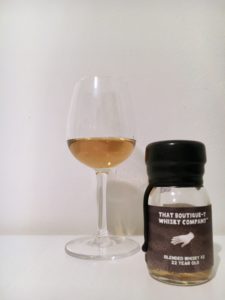 9th: Blended Whisky 2 – Batch 3 – 22 Year Old
9th: Blended Whisky 2 – Batch 3 – 22 Year Old
Today sees another blend from TBWC, this time a blended whisky which of course means a batting of both malt and grain whiskies.
Blended whisky is the workhorse of the Scotch whisky industry, accounting for around 80% of the overall market today. Something of an unsung hero, blended whisky was first pioneered in the mid-1800s to create a milder, more accessible tipple for those working indoors and in warmer climes, and this consumer-oriented approach is responsible for the growth and success that the entire industry is built on today.
As touched upon yesterday, blending is a real skill that can only be honed through years of experience. A blended whisky becomes more than the sum of its parts; flavours can not be considered in isolation, how a whisky manifests in a blend is very much a function of what it is being added to. Because of this the blender must know what a particular style of whisky would bring to a specific vatting. Today there are a number of options available if you’d like to try your hand at blending, from kits to do so at home to experiences arranged by brands such as Chivas. If you haven’t done this before I would recommend it to really get a handle on how blends are composed, it can bring new-found appreciation for what ends up in the glass.
As an independent bottler, the challenge is how to stand out in a market filled and dominated by the behemoths of the industry who have over a hundred years of brand-building behind them? The key as always is to do something different. Given that TBWC have access to some rather fantastically aged old grain whisky, perhaps a unique angle would be to construct a blend showcasing this instead of the grain component being simply a “filler” that acts the base for so many blended whiskies.
The label for today’s dram feature’s a disembodied hand feeling the surface of a planetoid which appears to be covered in grain… Or is it a soft and smooth material? Or is it something earthy? Let’s find out! A 22 year-old blended whisky, batch 3 is an outturn of 1,650 bottles and is bottled at 41.8% ABV.
Nose: Quite oaky initially, with a damp forest floor note. Buttered toast, then honey and vanilla sweetness. A hint of cocoa powder on the earthy side is balanced with a top note of redcurrant.
Taste: A delightfully silky mouthfeel brings lashings of milk chocolate initially, followed by creamy vanilla toffee, glacé cherries and orange oil. From the mid-palate onwards the delivery becomes a little more tannic with the oak notes from the nose reappearing.
Finish: Lingering cocoa powder with a touch of orange peel.
This dram is all about the palate; while the nose is somewhat reserved it comes alive with the texture of the mouthfeel. A session whisky!
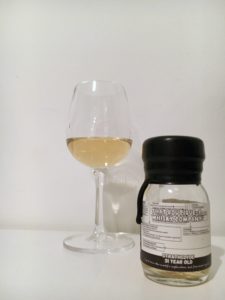 10th: Strathclyde – Batch 4 – 31 Year Old
10th: Strathclyde – Batch 4 – 31 Year Old
From a blended whisky yesterday where the grain component played more than a supporting role, to a solo performance today with a single grain whisky.
Grain distilleries are something to behold: far from the picture postcard malt distilleries these sites are industrial in nature, pumping out volumes per day that rival small malt distilleries’ annual output. As an example, Girvan distillery’s most recently installed continuous still produces 10,500 litres of spirit per hour. That’s 250 bottles’ worth every single minute. From a single still. These giant stills, unlike the pot stills from malt distilleries which operate in batches, are fed by a constant stream of wash, vapourising and condensing multiple times in a process of fractional distillation which can eventually yield a spirit of up to 95% ABV.
When Aeneas Coffey first patented this continuous still it was not without its critics, particular among the big Dublin distillers at the time who declared this to be silent spirit – i.e. lacking in flavour. In terms of the new make produced, they perhaps had a point. Every aspect of this distillation process is focused on yield. Any nuance of character from the grain would do well to traverse this process.
For this reason grain whisky is inevitably largely about maturation. The majority of grain whisky is destined for blends, and will be filled into rather active wood before being sent to the blender at a fairly young age having picked up a fair amount of cask character from additive maturation. A small amount finds its way into older refill casks where it spends decades slowly picking up complexity through oxidation and interactive maturation, and given enough time this whisky can be quite beguiling when bottled as a single grain.
Grain distilleries by-and-large have not been in the business of original bottlings, although in the last number of years a few more have appeared – notably Girvan who released a core range with rather aggressive pricing. Once again we turn to the independent bottler to offer interesting whisky at reasonable value. Well-aged single grains have been readily available through independents for some time, and TBWC got in on the act quite early in its existence having released some quite stunning examples.
Today’s dram is from Glasgow’s Strathclyde distillery. The fourth batch from TBWC, this release is 31 years old and bottled at 45% ABV.
Nose: Buttery, creamy toffee, vanilla ice cream and a touch of toasted coconut. At the back there is a hint of mint humbugs.
Taste: The toasted coconut from the nose is more dominant on the palate, being joined by warm vanilla custard and toffee pennies. Some creamy milk chocolate from the mid-palate onwards.
Finish: Milk chocolate and coconut combine on the finish – bounty bar!
A lavish delivery of sweetness and creaminess – one would be tempted to drizzle this over dessert! There’s not heaps of complexity here but this is a good example of the rich flavours grain whisky can develop given enough time in the cask.
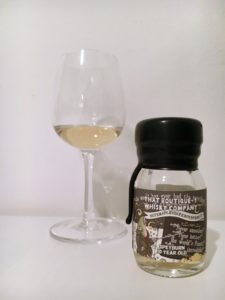 11th: Speyburn – Batch 3 – 10 Year Old
11th: Speyburn – Batch 3 – 10 Year Old
We are back in Speyside today with a single malt from Speyburn. A distillery which doesn’t receive much attention in the UK, this whisky is surprisingly popular in the US where it is apparently the 6th most popular single malt whisky. With this lack of popularity in its home territory there hasn’t been a great deal written about the place, and that which has tends to cover the same history: the rush to fill the first cask during Queen Victoria’s Diamond Jubilee year, the limited footprint of the distillery’s location in a valley requiring an operation built up as opposed to out, the innovation of the Victorian era with the installation of pneumatic drum maltings on-site.
Much press paints the picture of a distillery that has captured the transition of innovation to tradition, although to what extent this is true is certainly questionable. The drum maltings lie silent. The stills are no longer direct-fired. The (apparently once) long fermentation times have been eaten away at the alter of increased production – although this has alleviated recently with the installation of new (steel) washbacks and a second spirit still, bringing fermentation back up to a (still not exactly lengthy) 72 hours.
With much of the tradition gone, and any modern innovation being driven by yield, what is left to market against? A browse through the Speyburn website seems to place an emphasis on place: “Speyburn is Speyside” claims a tagline, asserting that one can expect to enjoy the “classic taste of Speyside” in every dram. Alongside notions of the “rich natural elements of this lush region of Scotland” finding their way into your glass, one is left wanting for details. Given that today malt is – as with most distilleries – brought in from centralised maltsters who source their barley from locations throughout the UK coupled with the afore-mentioned lack of space on-site requiring that the vast majority of spirit is tankered out of Speyside to be filled to cask and matured in the Central Belt one must ask what influence has Speyside as a location left on the whisky?
This leads to an interesting more general – and perhaps philosophical – question: which – and how many – aspects of production or ingredient-sourcing taking place locally is sufficient for a whisky to be considered of a place?
Such a question requires contemplation over a dram, and TBWC have us covered with its 3rd batch from Speyburn: a 10 year-old bottled at 49.5% ABV. In a back-to-basics marketing approach, the label depicts a salmon in a tweed jacket proclaiming the whisky to display “supersplendiferousness”, a concept we can all get behind.
Nose: A rich nose of toffee, brioche and dried fruit gives way to lighter notes of crisp red apple and orange blossom. In the background is a slightly off note of pennies.
Taste: Follows on from the nose with toffee dominating on the attack alongside barley sugar sweets. Tart redcurrant appears on the mid-palate, joined by cacao nibs. Quite peppery throughout.
Finish: Pepper and astringent dark chocolate combine.
This whisky feels a little over-feisty, in my opinion it would have benefited from a while longer in the cask. This additional interactive maturation may have tamed the peppery heat down to allow it to play nicely with the softer sweetness and fruit notes.
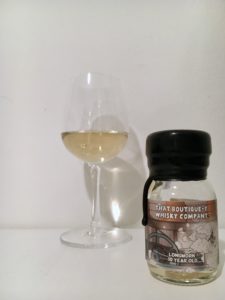 12th: Longmorn – Batch 3 – 10 Year Old
12th: Longmorn – Batch 3 – 10 Year Old
We don’t have far to travel to reach the source of today’s Advent dram – from Speyburn a 10 minute drive out of Rothes towards Elgin will see you arrive at Longmorn distillery, with its neighbour BenRiach a stone’s throw from there. The two distilleries have something of a shared history, with BenRiach initially built as “Longmorn 2” – the Boutique-y label on today’s dram depicts the steam engine which is still present at Longmorn, which was used to transport raw materials between the two sites.
While BenRiach is arguably the more widely-known whisky – particularly from the Billy Walker revival onwards – Longmorn has been quietly pumping out quality spirit for years. Primarily a blender’s malt, it has long been held in high regard by blenders and distillers alike, with its fruity and sweet profile a useful component in blends as well as a rather tasty single malt. Masataka Taketsuru spent a brief period working at the distillery during his time in Scotland, and it is said that the stills in both the Nikka distilleries were modelled after those in Longmorn. Praise indeed.
Despite enjoying this reputation the distillery’s owners have never particularly taken advantage, with original bottles having historically been somewhat sparse. More recently, the distillery range has offered very questionable value. A much-revered 15 year-old expression was retired back in 2007 with a 16 year-old with a disproportionately inflated price tag, and this strategy was then repeated a decade later when the 16 year-old was “reinterpreted” with a more American oak centric expression and a price which had almost doubled again. This has become a textbook example of a brand aiming to target the premium/luxury market solely by moving a product into a premium price bracket.
Once again we must look to independent bottlers to fill gaps left by the distillers, and we are in luck with Longmorn; excellent quality expressions have been readily available through a number of independents for many years, with TBWC having joined in. In my experience Longmorns are best explored in single cask format, where they display good maturity from a fairly young age, and hold up very well to extended ageing.
Today’s expression is a 10 year-old, the third batch from TBWC yielding 1,793 bottles at 48.3% ABV.
Nose: Light vanilla sponge and pears in syrup. The fruit is then dialled up to 11, with peaches, lime peel and a hint of vibrant pineapple. Wood spice provides a backdrop throughout.
Taste: Bright fruit and light baking spice, poached pears and victoria sponge. Develops through the mid-palate with a touch of marzipan sweet nuttiness and chocolate.
Finish: The fruit fades to leave notes of warming spice and cocoa powder.
An excellent example of a well-matured Longmorn, this whisky is very well developed at what is still a fairly young age.
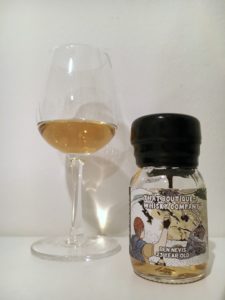 13th: Ben Nevis – Batch 10 – 23 Year Old
13th: Ben Nevis – Batch 10 – 23 Year Old
From the flatlands of Morayshire to the base of Britain’s highest peak. Today brings us to the oft-overlooked whisky region of the highlands – less accessible and categorisable than the Speysiders, less peaty and immediately identifiable than the Islays – and to Ben Nevis.
Never a particularly fashionable distillery, Ben Nevis has a history of being somewhat unorthodox. A Coffey still was part of the distillery for a period in the mid-20th century producing grain whisky, making it one of the only distilleries in Scotland that could produce a blended whisky entirely from spirit produced on site. Furthermore, Ben Nevis experimented with blending malt and grain whiskies as new make and maturing the resulting vatting, as opposed to blending separately matured whiskies. Not all experimentation is successful of course, the results in this case were found to be inconsistent at best.
During the same period fermentation occurred in concrete washbacks, otherwise unheard of in the Scotch whisky industry. The use of brewer’s yeast in fermentation was not quite so unique back in the fifties, but today Ben Nevis are more or less the only distillery in Scotland still doing so. Brewer’s yeast is still popular in Japan, where it is believed to be a key component in flavour creation. This in combination with a slow, steady distillation helps produce a rich new make with something of an old-school feel.
The brand itself is very much consistent with this sentiment, particularly the bottles themselves, which feature labelling with strong evocations of whisky from the late eighties and nineties.
In a final example of the pervasiveness of anti-establishment sentiment that has always been present at Ben Nevis, the following is a quote from founder “Long John” MacDonald from way back in 1827:
“There are some who would have you believe that there exists a kind of divine secret, a miraculous ingredient or genius behind the manufacture of Scotch Whisky. I however, acknowledge no miracle other than that which is worked when science and nature combine.”
Perhaps modern whisky copywriters should take note!
Today we forego the old-fashioned labels and instead have an expression from TBWC where the obligatory cartoon label depicts a chap on the peak of Ben Nevis holding a bottle of Boutique-y Ben Nevis (with its own label repeating this scene, presumably ad infinitum). This is the 10th Ben Nevis release from TBWC, a 23 year-old bottled at 48% ABV.
Nose: Grilled pineapple spears and other bright fruit initially, with a wave of vanilla and caramel following. Behind this are notes of well-roasted malt and café au lait. A distant hint of smokehouse lingers in the background.
Taste: A big, chewy mouthfeel brings notes of toffee with raisins and hazelnut. Behind this there is tropical fruit balanced with earthy spice and a faint oily note.
Finish: The earthy spice eventually wins out, lingering long on the finish.
An excellent example of the old-school nature of whisky from Ben Nevis. Full of big flavours yet still finely-balanced, this is delicious stuff.
 14th: Irish Single Malt #1 – Batch 2 – 13 Year Old
14th: Irish Single Malt #1 – Batch 2 – 13 Year Old
The resurgence of Irish whiskey in recent years is very slowly beginning to bear fruit. After a long period of dormancy, Irish whiskey distilleries started popping up at an impressive rate from three at the turn of the millennium to twenty-five today, with around the same number again currently planned or already under construction.
Given that spirit only began to flow at the majority these distilleries within the last five years, it may be surprising to see how many brands are already represented in the ever-growing Irish whiskey section of your local purveyor of spirits. Although there is a healthy diversity of labelling, the fact is that the whiskey on these shelves will all be rather similar, as the majority will have been sourced from one of the surviving three distilleries who have sufficiently mature stock available.
We are now seeing the beginning of a transition period, where some of the earlier distilleries from this new wave are releasing their inaugural expressions. This will be an interesting phase, as those who have heavily branded their sourced stock may be at risk of losing the base they have built up on what will inevitably be a rather different whiskey from their own.
This is of course not an issue for the independent bottlers, to whom the whiskey enthusiast looks to provide both typical and atypical expressions from established distilleries, and are looking for something interesting as opposed to something familiar.
Today’s advent dram is an Irish single malt from an undisclosed distillery. This style of whiskey (as opposed to Single Pot Still) will most likely exclude Midleton distillery, so we are looking at either Bushmills or Cooley, with the former being the bookies’ favourite. The label does not offer any hints either way, but it does not disappoint with a rather excellent Father Ted reference. This is the second batch from TBWC, a 13 year-old bottled at 48.4% ABV.
Nose: Initially peach gummies and vanilla, a slightly waxy/playdough note, underripe banana, honeydew melon and muscat grapes. Becomes more floral over time with bergamot blossom.
Taste: Earl grey tea with summer fruit infusion, becoming warmer and richer towards the mid-palate with toasted baking spice, becoming increasingly sweet.
Finish: Dried apricot balances nicely with baking spice.
The nose on this dram is quite exquisite, however the palate is a little uncomplicated in comparison with a hint of youth remaining. Overall a rather solid 13 year-old single malt. If the new wave of Irish distilleries produce whiskies like this then the industry is in not too bad a place.
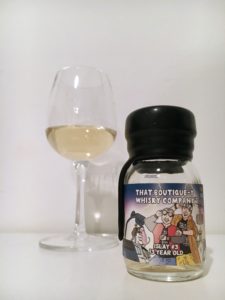 15th: Islay #3 – Batch 4 – 13 Year Old
15th: Islay #3 – Batch 4 – 13 Year Old
We venture off the Scottish mainland for the first time today, to the sacred whisky isle of Islay. This island has very much become a brand in itself over the years, with its single malts enjoying a strong reputation for quality peated, smoky, coastal, medicinal whiskies.
Of course, as explored earlier in this Advent calendar regionality in Scotch whisky is largely arbitrary; there is nothing inherently or exclusively Islay about peat smoke. Once the most convenient fuel to hand throughout the country, its usage diminished across the mainland with the arrival of the rail network bringing practical access to coke and coal as a more efficient (and neutral) fuel in the malting process. As most mainland distilleries switched, the logistically-remote Islay distilleries remained on peat giving their malts an almost unique selling point for some time. While logistics technology has since progressed to the point where peat is likely the more costly option, it is of course worth its cost several times over in its marketability.
And boy do the marketing departments of the big Islay distilleries take advantage of not only the island’s reputation for whisky, but also its near-mythological status in history and culture. This narrative is bought into to the extent that visits to the island by enthusiasts looking to tour their favourite distilleries are very much considered a pilgrimage. Yet having arrived, the first-time visitor may start to feel the spell break a little. The centralised maltings at Port Ellen bring in barley from all over the UK, the malt is distilled on site at one of the distilleries before the new make spirit is most likely then ferried back off the island for maturation on the mainland. With nine distilleries producing over ten million litres of spirit per year on an island of 239 square miles, it is quite obvious that this is a logistic necessity. Nevertheless, infused with the marketing narrative linking product and place, the first time visitor can understandably feel a little deflated with this realisation. Just as we considered with Speyburn, it leaves the drinker asking somewhat philosophically “what makes a whisky from Islay?”.
Today we have a whisky most definitely from Islay in the conventional sense, however it is once again from an undisclosed distillery. In this case the label may be giving us a hint, the Back To The Future themed depiction looking remarkably similar to the labels used for Laphroaig bottlings! Batch 4 from this officially-unnamed Islay is 13 years old and is bottled at 48.6% ABV.
Nose: Led unsurprisingly by waves of big smoke, there is the tangy fruitiness of bbq sauce and the slightest hint of engine oil. In time the nose becomes fruitier and more tropical, with notes of chargrilled pineapple and passionfruit.
Taste: A surprisingly honeyed mouthfeel serves as a good vehicle for dirty, coastal peat smoke on the front of the palate. Richer tropical fruit appears as in the nose with guava at the forefront, before a more tannic aspect takes over with a peppery heat.
Finish: White pepper and earthy peat smoke combine.
A whisky that has been bottled at just the right age to feel mature yet still deliver a big Islay punch in the face. Simple enough, yet delicious stuff.
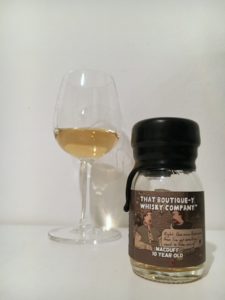 16th: Macduff – Batch 8 – 10 Year Old
16th: Macduff – Batch 8 – 10 Year Old
Today’s Advent dram is from a distillery which may initially seem unfamiliar to those who do not regularly delve into the depths of independent bottler offerings. Unlike some of the previously encountered blender workhorses, however, it is quite likely you will have seen this whisky on shelves in single malt format.
Not that Macduff should not be considered a blender workhorse: of the 3.2 million litres produced annually, the majority finds its way into not only owner John Dewar & Son’s eponymous whisky, but perhaps more importantly the William Lawson blend. Another name which may have limited recall in its home territory, William Lawson is actually the sixth-best-selling Scotch whisky worldwide, largely thanks to a commanding market share in Russia.
The reason why Macduff may not be a familiar name is that its single malts have for much of its lifetime been branded as either Glen Deveron or now more recently The Deveron. While it is particularly rare in Scotland for a single malt whisky to take a name other than that of its distillery, the US is a market where it is far more de rigueur to cite names of legendary whisky personalities. This carries the prerogative of continuing – or even resurrecting – a brand despite any brick-and-mortar issues a distillery may face. The value of this from a consumer perspective is debatable; US whiskey circles are rife with guides on how to read barcodes and product numbers to ensure that you get “the good stuff” from when a whiskey was produced at the desired site.
In Macduff’s case, one may assume that the use of Deveron – a nearby river famed for its salmon fishing – is a clever piece of marketing to draw brand recognition from what is undoubtedly a target market. However research reveals a much simpler explanation: Macduff was a trademark owned by Diageo-precursor DCL, and hence a different brand name had to be found.
The most recent incarnation of Macduff’s official single malt output is The Deveron, released as part of John Dewar & Son’s Last Great Malts series to relatively little fanfare in comparison with some of the series’ other whiskies. With that said there was clearly some attention paid to its branding, with rather distinctive and fetching frosted glass bottles carrying the Deveron label.
Today, of course, we are focused firmly on independent territory with a bottler whose labels never disappoint, so we are safe to use “Macduff” as the name (just don’t mention the name of the other Shakespearean character on the label!). This is the eighth bottling from TBWC, a 10 year-old expression bottled at 50.2% ABV.
Nose: A robust nose brings hazelnut cream, walnut whips and Jaffa cakes. Becomes fruitier over time, taking on a wine gum aspect
Taste: Immediately takes on the fruit from the nose, with wine gums, strawberry laces and stone fruit. The alcohol makes its presence felt from the mid-palate onwards as dried grass and herbal notes begin to dominate alongside earthy spice.
Finish: Settles down to cocoa powder and juicy sultanas.
£60 for 50cl of a 10 year-old Macduff might initially seem on the steep side, but this is a whisky with character, it has that certain something which draws you back in. One could do a lot worse for the money.
 17th: Cotswolds – Batch 1 – 3 Year Old
17th: Cotswolds – Batch 1 – 3 Year Old
We are now at a stage of maturity with English whisky where it has moved beyond a curiosity. With well over a dozen distilleries at various stages of development and production, English whisky is most definitely a category in its own right. While mainstream press will likely roll out the tired upstart distilleries in England stick it to the Auld Enemy trope for many years to come, the more discerning whisky enthusiast will today be at least partially familiar with what is being produced south of the border.
The last couple of years has seen a transition as quite a number of distilleries have now released their inaugural whisky, and in a few more cases have already followed these up. Cotswolds were the first in the most recent wave of distilleries to get their whisky on shelves, and there is a lot to be admired with how they went about it.
The inaugural release is understandably a huge moment for any distillery. After years of investment; an inevitably huge sum of money and the effort and endeavours of a devoted team finally sees fruition. This cause for celebration can easily lead the fledgeling distillery to view its inaugural release quite differently from its intended long-term consumer base. The temptation may be to release something which reflects its momentousness in both its presentation and (inevitably) its price tag. Cynical flippers will lap this up, creating a secondary market at the expense of collectors. The forgotten drinker, they whom the distillery wishes to target longer term, are often priced out.
Not so with Cotswolds. Released in 2017, their first single malt was on shelves at less than £50, and in sufficient volume for it to be available for more than five minutes. This was no one-off, special release – it was fairly swiftly followed by successive batches in the same mould and at the same price. This is clearly whisky made by people who want you to drink it.
Every aspect of Cotswolds’ branding and marketing gives the impression of people who want attention to be focused solely on the liquid inside the bottle. Product pages are free from story telling and full of information on ingredients and on process. Which is exactly as it should be.
Today we have an independent expression bottled by TBWC – an excellent opportunity to venture outside the standard ex-bourbon/ex-STR vattings of the core Cotswolds releases and take a look at the distillery character from a different angle. This first batch from Boutique-y is a 3 year-old bottled at 50.4% ABV.
Nose: Light and fruity with pears in particular. Vanilla, cinnamon and other baking spice is present alongside a touch of pastry and icing sugar completes the dessert theme.
Taste: Syrup sweetness with a touch of citrus peel, lemon curd up front. The mid-palate sees the arrival of warming spice, with a touch of liquorice adding a slightly tannic texture to the mouthfeel.
Finish: The overarching sweetness of this dram becomes darker and more treacle-like as it balances with earthy spice.
A whisky which is surprisingly layered for its young age. This certainly showcases a slightly different aspect to the Cotswolds’ spirit, however at just shy of £60 for the 50cl it’s creeping outside of the value bracket of the distillery bottlings.
 18th: James E. Pepper – Batch 2 (PX Finish) – 3 Year Old
18th: James E. Pepper – Batch 2 (PX Finish) – 3 Year Old
From a new-world whisky country we head west to an old-world producer, the United States, where whiskey has been distilled since almost as soon as the first Germans, Scots and Irish immigrants arrived. Certainly no younger sibling of Scotch and Irish whisk(e)y, the older distilleries and brands carry dates of establishment from the same period as those adorning Scotch malt whisky distilleries.
One such example is Old Pepper. A Pepper family brand established during the throes of the Revolutionary War in 1780, this whiskey really became a household name during the tenure of James E. Pepper – grandson of the founder – under whom a distillery is built in Lexington, Kentucky which was at the time the largest in the country (and possibly the world!).
Despite having a tendency to being steadfast in the face of adversity – James E. Pepper whiskey was one of the few to receive endorsement to be sold for “medicinal purposes” during prohibition – the distillery and the brand finally succumbed to the pressures of a struggling industry in 1958 when operations ceased.
After lying dormant for almost 60 years, the brand was revived by Amir Peay who (re)commenced distilling under the James E. Pepper name in 2017. Far from a brand resurrection in name only, Peay has fitted out the distillery on the same site as the Old Pepper distillery, and has gone to great lengths to ensure the same water source is used. This focus on ingredients and raw materials has motivated a strategy of sourcing grain locally. All details to be commended.
Today’s bottling from TBWC is a 3 year-old rye, which a very quick calculation will confirm can not be from the new stills. Instead, we have a rye whiskey from MGP in Indiana, the behemoth that has served as source to many a fledgeling distillery in the recent craft wave. A real question is with so much MGP-distilled rye whiskey out there, how can one product differentiate itself from the others? Taking a page from the Scotch malt whisky playbook, cask finishing offers a convenient method to put a twist on a familiar whisky, and today we have an excellent example of this with a PX-finished rye whiskey – there can’t be too many of those around! Part of a trio of Boutique-y rye releases from James E. Pepper, this expression stands alongside an Oloroso finish and an ale finish. This particular expression is a 3 year-old bottled at 50% ABV.
Nose: An initial rich, viscous sweetness of dates in syrup is followed up with expressed citrus oil and floral notes of refresher sweets. There is a sappy, woodiness alongside classic rye notes of baking spice.
Taste: Lots of dates in syrup again up front, with the spirit character only gaining a foothold from the mid-palate onwards, bringing allspice and fennel. Things then take a darker turn with the palate taking on an oaky, more tannic character.
Finish: Charred oak and baking spice combine for a fairly lengthy finish.
There’s nothing tremendously complex going on here, but the combination of PX sweetness and rye spice works rather well and produces a rather more-ish, suitably Christmassy dram.
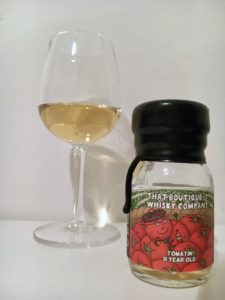 19th: Tomatin – Batch 4 – 11 Year Old
19th: Tomatin – Batch 4 – 11 Year Old
A theme we have visited on a few occasions thus far during advent, categorising Scotch malt whisky by region is at best a flawed concept. We have another prime example today in Tomatin, a Highland distillery off to the west of Speyside. If regional character were to be believed we should be tasting a robust and rounded malt whisky today, but instead Tomatin is better known for offering a more gentle, orchard fruit led spirit.
For most of its life Tomatin has been quietly pumping out spirit without much attention. Due to its unassuming nature visitors are often surprised by the sheer scale of the place on arrival. After a sustained period of growth throughout the 1950s-70s, 23 stills were in operation at the distillery, which at the time made it Scotland’s largest, and with a capacity of around 12 million litres would still place it among today’s big boys were it still producing at this rate. As it stands operations have scaled back somewhat to a still-significant 5 million litres per annum.
Long a useful constituent in many blended whiskies, In modern times Tomatin has slowly and steadily increased emphasis on its whisky as a single malt. Alongside a healthy core range which spans from no-age-statement expressions through to a 36 year-old – all bottled higher than the 40% ABV minimum, Tomatin regularly releases limited edition ranges and visitors to the distillery are afforded the opportunity to fill their own bottle from a selected cask in the visitor centre.
One fairly recent limited edition range was Five Virtues. A theme paying homage to the ingredients and process involved in malt whisky production, five expressions titled Wood, Fire, Earth, Metal and Water each intend to showcase an individual aspect. So far this all may sound rather pedestrian and yet another story-led NAS range devoid of transparency. Yet head to the product page and there is a button at the bottom “request recipe”, where upon entering an email address you will receive exact cask composition and years of distillation are made available – a nice workaround to regulations. This is typically Tomatin – no self-aggrandising campaign, no media stunts, just quietly doing the right thing.
Today’s expression is the fourth batch from TBWC, an 11 year-old bottled at 51% ABV.
Nose: An interplay of malt sweetness, warm spice and orchard fruit: lightly poached pears, shortcrust pastry with vanilla ice cream. Granola drizzled in honey.
Taste: Golden syrup, caramel and hobnob biscuits lead a sweet delivery. The mid-palate feels a little “hot” with white pepper and crystallised ginger root, with some more earthy spice towards the back.
Finish: Dark chocolate and honey is joined by the soft orchard fruit from the nose.
A very pleasant if unassuming dram – how very Tomatin!
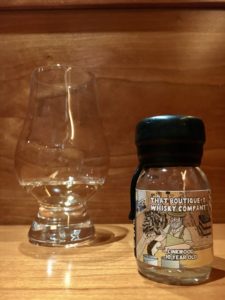 20th: Linkwood – Batch 7 – 10 Year Old
20th: Linkwood – Batch 7 – 10 Year Old
Today we return to Speyside and to Linkwood distillery in Elgin. Another blender’s malt, Linkwood is Diageo-owned so in all likelihood this will be a component of Johnnie Walker. Blenders malts appears to be something of a theme in this advent calendar which is of course no surprise: not only are these malts the staple of well-known blends, they are also the bread and butter of the independent bottler wishing to give the whisky enthusiast something outside the well-trodden aisles of the booze outlet.
A fairly quiet, unassuming distillery for most of its lifetime, the most interesting aspect of its history is from 1971 where expansion took the form of building a second site, imaginatively named Linkwood B. In a move not too dissimilar from a far more recent rebuild/expansion from a far less quiet and unassuming distillery, what would be henceforth known as Linkwood A was shut down. In reality, production continued sporadically at this site until the mid-eighties, with certain rumours suggesting further sporadic distillations in the early nineties too.
Unlike other site expansions and rebuilds, there seems to have been little effort to retain a consistent spirit character, with Linkwood B foregoing cast iron worm tubs for modern shell-and-tube condensers. This strikes me as a bold move for a blender’s malt where a distillery is called upon to provide a certain specific aspect to a blend. Throw in the sporadic spirit runs from Linkwood A over the years and it seems that the Blender would be playing cask roulette with Linkwood!
Today’s whisky is batch 7 from TBWC, a 10 year-old expression which all but guarantees we have Linkwood B in our glass. This was a release of 1,634 bottles at 48.2% ABV.
Nose: Initially a little shy, the whisky then opens up to a veritable orchard of fruit, with lemons, crisp green apple and a touch of soft pear. Behind this is agave syrup and an interesting saline aspect.
Taste: A hit of vanilla introduces the palate, tangerine segments and cracked black pepper. Wood spice and orchard fruit combine from the mid-palate onwards.
Finish: Sweet spice and a delicate hint of marzipan.
A whisky with a vibrant, youthful personality; one which holds its relatively young age rather well.
 21st: Clynelish – Batch 7 – 21 Year Old
21st: Clynelish – Batch 7 – 21 Year Old
Following on from yesterday, today’s dram is from another distillery whose late-1960s expansion took the form of a complete rebuild across the street, with production following on completion. The story of Clynelish is perhaps even more intriguing than that of Linkwood.
As with Linkwood, production of Clynelish transferred to the new site on its completion – this time the new site was built specifically to replicate the old as far as possible. Confusingly, this time the new site took the name Clynelish, while the old site took the name Clynelish B for a while.
The old site was mothballed, but was resurrected in 1969 under the name Brora, with a mission to produce a peated malt for DCL blends (i.e. Johnnie Walker) in lieu of Caol Ila which went through the double-whammy of a drought followed by its own rebuilt (in-place in this instance – perhaps not as much space on Islay!). After Caol Ila returned to production, Brora continued producing a malt with reducing peat levels until 1983 when the distillery was closed.
Meanwhile Clynelish (the younger) quietly continued operation, its whisky being known in particular for exhibiting a waxy character – something which was far more common in the mid-twentieth century than it is today. It is said that the development of this character relies on a residual oil build up in the feints receiver – something the distillers found out with disastrous consequences when this was cleaned out one year during silent season. Thankfully the residue was allowed to re-establish and the desired waxy element returned.
Clynelish was one of the first distilleries to receive the ‘Boutique-y treatment, and today we have the seventh batch from this much-revered distillery – a 21 year-old bottled at 47.8% ABV.
Nose: Light summer fruit and barley sugar, alongside those classic snuffed candles. Becomes increasingly tropical with time, banana splits, pineapple and passionfruit.
Taste: Apple and banana fruit salad with a squeeze of lime juice, pound cake with marzipan. There is a tannic aspect from the mid-palate onwards, black tea with warm spice.
Finish: Notes of bergamot mingle with the black tea; a cup of earl grey.
A rather shy dram initially, given some time it reveals its character in spades – one to take one’s time over!
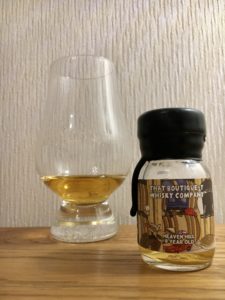 22nd: Heaven Hill – Batch Batch 1 – 9 Year Old
22nd: Heaven Hill – Batch Batch 1 – 9 Year Old
We hop back across the Atlantic for the 22nd Advent dram, to the United States and Kentucky, undoubtedly the home of bourbon. Today’s dram is from Heaven Hill distillery, the largest independent distiller in the US and apparently holds the second-largest inventory of bourbon in the world.
Unlike your typical single malt Scotch distillery, Heaven Hill is a versatile operation distilling a diverse range of spirit, including two different bourbon mash bills (the first a fairly classic 78% corn, 10% rye, 12% malt barley recipe, the second a wheated bourbon comprising 75% corn, 20% wheat, 5% malt barley), a Kentucky-style (i.e. 51% rye with the remainder primarily corn) rye, a corn and a wheat mash bill. I can only imagine that producing all of these spirits on a single site is something of a logistical challenge!
In a manner similar to most large US operations, the whiskey produced at Heaven Hill goes under a number of brand names, almost none of which (Heaven Hill bourbon excluded of course) reference their distillation site. Instead, the brands largely take the names of legendary characters from American whiskey history: Elijah Craig, Evan Williams, Henry Mckenna, Parker’s Heritage to name but a few.
Once again, this separation of brand from source came in handy in 1996, when the original Heaven Hill distillery was tragically destroyed in a devastating fire, with the loss of around 90,000 barrels as well as the operation itself. During this time, fellow distillers Brown-Forman and Jim Beam offered assistance and produced whiskey brands – such as Rittenhouse Rye – on behalf of Heaven Hill until it found its feet. A true sign of the camaraderie one often finds in the whisk(e)y industry not only in the US but in Scotland and the wider whisk(e)y world once the layers of marketing are peeled back.
Heaven Hill began distilling for itself once more in 1999 having purchased the Bernheim distillery from Diageo, where all Heaven Hill whiskeys are produced to this day.
We have a 9 year-old whiskey from TBWC today, which puts us firmly in post-fire Bernheim Heaven Hill territory. The use of the term American Whiskey is intriguing here – TBWC have separately released a bourbon and a corn whiskey from Heaven Hill – possibly implying that this is neither, which leaves the question: what do we have here?
Nose: Doughy and buttery with warm baking spice and caramel – like stepping into a bakery! There are top notes of citrus fruit, orange in particular and some orchard fruit in the background.
Taste: Baking spice mingles with more earthy spice with a touch of cocoa powder, some orange peel and forest fruit, perhaps a hint of dried fruit too. The mid-palate has a a hot, peppery aspect.
Finish: Earthy spice and cocoa powder.
A solid whiskey with definite, assertive character – for £45 for a bottle this is good value indeed.
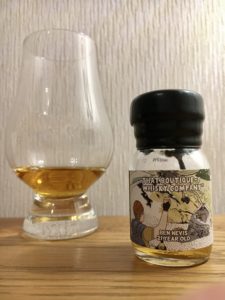 23rd: Ben Nevis – Batch Batch 8 – 21 Year Old
23rd: Ben Nevis – Batch Batch 8 – 21 Year Old
Today marks our first return to a familiar distillery for Advent, and it is a most welcome return indeed! We are back outside Fort William in the Highlands, at the foot of Ben Nevis to the resolutely aberrant distillery of the same name.
As discovered back on day 13, Ben Nevis had fairly mixed fortunes until 1989 when it was taken over by Nikka. In a move possibly inspired by Takara Suzo’s acquisition of Tomatin in 1986 to ensure an uninterrupted supply of whisky for import to Japan, Nikka ensured control over what had been a significant source of spirit – and hence an important business interest – for some time.
What happens to all of this Ben Nevis whisky exported to Japan? If you believe every single rumour of a Japanese whisky purported to include some Ben Nevis then the production capacity of the distillery would surely have to be among the largest in Scotland to support this market!
As an interesting aside, one may recall that Ben Nevis was home to a continuous still until 1981. Given the vertical integration of Japanese distilleries, where both multiple styles of malt and grain whisky are created on a single site in order to produce what is essentially a single blend, one wonders how tempted Nikka may have been to reinstate this practice at Ben Nevis?
Instead, the Nikka purchase heralded a new focus on quality rather than diversification. With the stability that this ownership brought, production recommenced within a year of the purchase after some maintenance and upgrades to the site. The distillery’s wood policy was revised and improved, going so far as to re-rack a significant portion of existing stock in the warehouse.
As we have already seen, the distillery is thriving today in terms of the quality of whisky being produced, with a certain old school character which exudes personality. Today we have an earlier expression from TBWC – batch 8 – which is a 21 year-old bottled at 48.9% ABV. How will this fare after the excellent 23 year-old batch 10?
Nose: Starts off with tropical fruit – pineapple and lime, with a slightly funky mineral note behind this. Once the fruit begins to subside a layer of rich toffee and caramel is revealed, with a touch of paprika spice in the background.
Taste: Toffee and milk chocolate initially, the fruit then returns in a different guise, primarily stone fruit. There is a slightly floral note, with rosewater Turkish delight on the mid-palate.
Finish: A fairly brief finish of light fruit and a touch of spice.
This dram is something of a surprise, it has a more delicate feel than batch 10 and is far more vibrant than would be expected for a 21 year-old Ben Nevis. Such is the joy of independent bottlings – there are always surprises to be had!
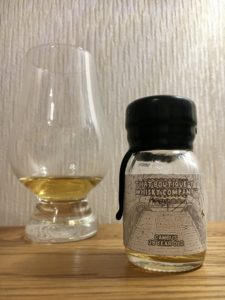 24th: Cambus – Batch Batch 11 – 28 Year Old
24th: Cambus – Batch Batch 11 – 28 Year Old
The final whisky of Advent is from a distillery at the heart of what was a particularly interesting time for Scotch whisky in the second half of the 19th century. From its origins an agricultural product of limited scale, the development of continuous distillation in particular changed this. Both the volume of production and the always-on nature of its process quite literally elevated whisky to industrial scale.
And where production led business practice followed, and here Cambus very much played its part. In 1856 during a period of fluctuating demand for grain whisky, Cambus along with five other Lowland grain distilleries agreed to divide the market equally amongst themselves. This agreement was further formalised in 1877 with these distilleries forming Distillers Company Limited (DCL), essentially a cartel fixing prices and manipulating the market. Thus began a pattern of rather murky business practices which was concluded by its subsequent purchase by Guiness through fraudulent means, a purchase which eventually resulted in the Diageo we all know and love today.
This collusive behaviour created an entity which controlled the Scotch industry for most of the 20th century (and arguably does to a certain extent today), which on one hand created a strong voice for the industry when lobbying its general interests, but whether the wider effects of this large conglomerate’s control of the industry has been positive for whisky as a whole is something that is very much up for debate (best held over a few drams).
Cambus also played a starring role in the What is Whisky? trials in the early 1900s, with a Pure Grain Whisky release being heavily marketed to the public in an effort to sway opinion against malt distillers arguing that continuous distilled grain spirit should not be called whisky. This may come as something of a surprise to a number of people who may reasonably assume that seeing a grain whisky outside of a blend is a far more recent phenomenon.
Although there have been a few original bottled releases of grain whiskies scattered across the years – with the number increasing fairly significantly in the last decade – whisky enthusiasts have typically turned to the independent bottlers to “judge for themselves what a pure patent-still grain whisky was like” as DCL’s 1906 advertisement in The Daily Mail challenged.
As we have seen already during the course of Advent, TBWC has some rather good form for releasing good quality grain whisky, and today we have the opportunity to sample a 28 year-old single grain from Cambus, the 11th Boutique-y batch, bottled at 47% ABV.
Nose: Lots of vanilla fudge, some iced coconut and mini-milk ice lollies. There is sugar, powered icing sugar initially but this becomes richer and darker, towards muscovado given some time in the glass, which is joined by a hint of stewed green apple.
Taste: A bright palate initially with fresh orchard fruit, crisp green apple primarily. This is supported in the background with a layer of vanilla and clotted cream. The palate develops with walnuts and lemon bon-bons on the mid-palate
Finish: A long yet gentle finish of clotted cream and coconut.
A reasonably solid single grain. Although certainly not silent spirit and definitely worthy of the name whisky despite the protestations of the early-1900s malt distillers, this dram does lack the sumptuous qualities of certain older grain whiskies.
And with that we have reached the end of our Advent journey – a whirlwind tour of the independent bottler’s repertoire exemplified by That Boutique-y Whisky Company. We have covered single malts, single grains, blended malts, blended whiskies, bourbons and ryes, covering well-established distilleries, new players and those obscure blend-workhorses rarely seen in their pure form.
For the aspiring whisky enthusiast wishing to broaden their whisky horizon this advent calendar offers an excellent vehicle. As a showcase of what That Boutique-y Whisky Company can offer, however, I did feel that the contents could have done more to exhibit some of the great new world whiskies that TBWC have bottled in recent years. Independent bottlers operate in a crowded space today and this is where TBWC can set itself apart from its peers.
